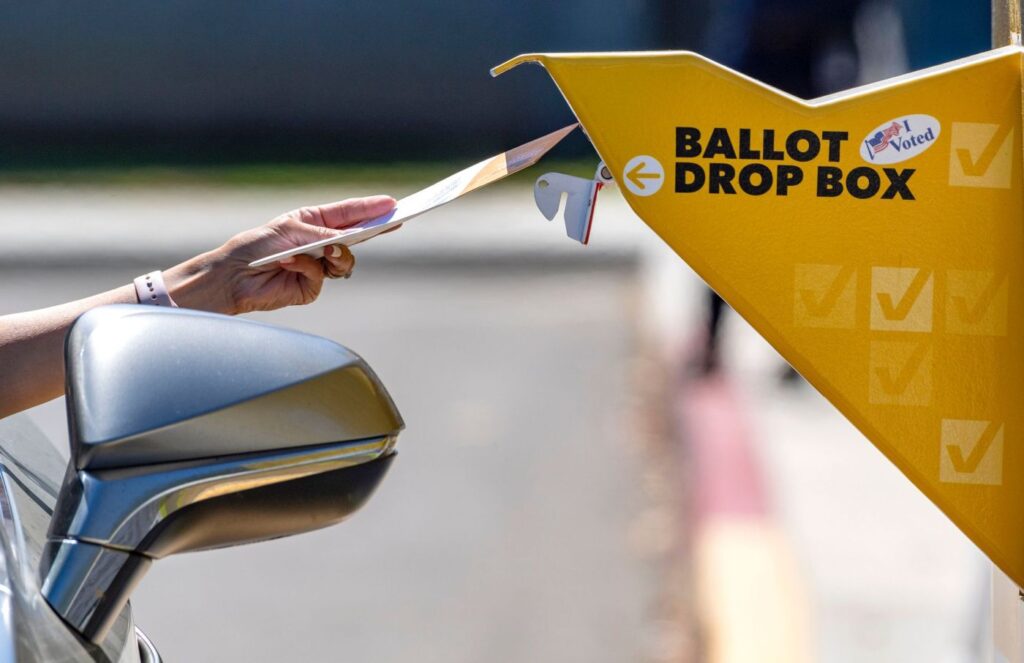
My colleague Sal Rodriguez recently lamented how “the Republicans have basically thrown in the towel this cycle on the gubernatorial race.” That will produce an even bigger landslide for Gov. Gavin Newsom’s re-election this November. It’s possible his only challenger will be a fellow Democrat.
The GOP definitely needs to get its act together in almost every way. But there’s another culprit for this becoming a one-party state: The Top Two Primary scheme voters were lured into passing in 2010 as Proposition 14.
The result: in 2016 for U.S. Senate, two Democrats faced off, no Republicans: Kamala Harris, now the vice president, and Rep. Loretta Sanchez. The same happened in 2018, with incumbent Sen. Dianne Feinstein going against former Sen. Kevin de Leon, a city councilman in Los Angeles now running for mayor.
What kind of “democracy” is it where the only choice is no choice between the parties?
Sure, Republicans still would have lost those November elections. But wouldn’t it have been a good thing to get some different ideas out there?
Just as bad, Top Two killed third parties in California. Remember when, up until 2010, a November ballot used to list candidates from the Libertarian, American Independent, Green and Peace & Freedom parties? The ballot pamphlet mailed to voters included their policy ideas.
And in the American political tradition, third parties often advanced policies later adopted by the major parties. Eugene V. Debs ran on the Socialist Party ticket five times. Some of his proposals (unfortunately) became parts of President Franklin Roosevelt’s New Deal.
After the Libertarian Party (more to my liking) was formed in 1971, its skepticism of government taxes and regulations grew in influence until they became part of Ronald Reagan’s winning platform in 1980. The Green Party obviously has influenced the Democratic Party’s environmentalism, especially in California.
And with a war raging in Ukraine, wouldn’t it be valuable to get the perspective of the Peace & Freedom Party in the race for U.S. Senate, instead of just that of incumbent Democrat Alex Padilla and – probably – another Democrat?
Top Two also reduces dozens of races for Assembly, state Senate and the U.S. house to pointless exercises for Republicans. This cancels the “junior varsity” function of the old primary system, which gave new, inexperienced candidates a chance to run a race and show their chops. The best then could move up. Now, nobody moves anywhere – except maybe to another state.
As of Jan. 4, Secretary of State Shirley Weber tallied statewide 47 percent of voter registered Democrat, 24 percent Republican, 23 percent No Party Preference and 6 percent Other. So it’s nearly 2-to-1 Democratic.
Related Articles
California Democratic leaders take heat from two directions
Gov faces easy re-election as GOP collapses
Enforcing abortion bans is much harder than passing them
Kevin Kiley’s Proposition 47 repeal bill fails in committee and that’s a good thing
Congress must play central role in deciding Russia-Ukraine war involvement
It’s obvious why Top Two squeezes out the Republicans. Even if the party finally gets its act together, it won’t be able to get on the ballot. It’s hard to get more anti-democratic (small “d”).
In 2010, both Republicans and Democrats, as well as the third parties, opposed Prop. 14 as interfering in their democratic right to pick their own nominees. It’s too late for reform in 2022.
But repealing Prop. 14 – or at least allowing a Top Four system like in Alaska – ought to be the primary reform for the state in 2024, especially for the GOP.
Otherwise, with democracy canceled, Republicans might as well stay home with some medical marijuana and binge watch “The West Wing.”
John Seiler blogs at johnseiler.substack.com
